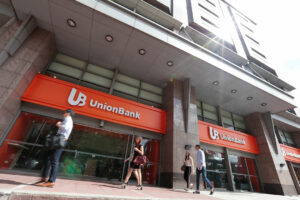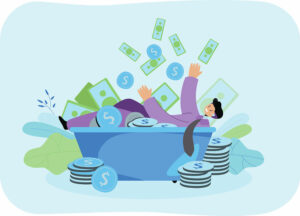Why finance attracts the least trustworthy among us

By Justin Fox
FORMER Goldman Sachs banker Tim Leissner has been fessing up to an awful lot of dishonest behavior lately.
Under questioning from both the prosecution and defense, Leissner admitted to faking divorce documents, creating phony e-mail accounts, marrying multiple women at once, and keeping money that wasn’t his. That’s just a brief summation from an article by Patricia Hurtado of Bloomberg News that also includes a fun bullet-pointed list of Leissner’s “Web of Lies.” For the jury in the trial of Roger Ng over his alleged role in the loot-ing of Malaysian sovereign wealth fund 1MDB, the serial prevarications of Ng’s former boss Leissner (who already pleaded guilty) present some challenges in determining how seriously to take his testimony.
For the rest of us, they raise some interesting questions. Was Leissner, once the Southeast Asia chairman of the world’s most prestigious financial institution, a total outlier? Or was his boundary-pushing and lack of trustwor-thiness just on the extreme end of a financial-industry continuum that includes a lot of other dodgy behavior?
There’s a new(ish) paper by four business and economics professors based in Germany and Austria that attempts to answer this, sort of. A version recently accepted for publication in the journal Management Science is ti-tled “Social Preferences of Young Professionals and the Financial Industry,” while there’s an earlier, paywall-free draft called “Trustworthiness in the Financial Industry.” The key finding is that university students who score low in trustworthiness in a simple game are more likely than others to end up working in finance. You probably want to know more about that game. It was introduced in 1995 by three American accounting professors, who structured it like this:
Subjects in room A decide how much of their $10 show-up fee to send to an anonymous counterpart in room B. Subjects were informed that each dollar sent would triple by the time it reached room B. Subjects in room B then de-cide how much of the tripled money to keep and how much to send back to their respective counterparts. The accounting professors dubbed this an “investment game,” but others took to calling it the “trust game.” For social scientists it has become what one recent review article described as “a workhorse to measure individual differences in trust and trustworthiness.” The decisions made in Room A are said to reflect trust and those in Room B trustworthiness. That is, the more money one sends to Room B from Room A the more trusting one is, and the more money one returns from B to A, the more trustworthy.
My initial reaction upon reading the description of the game was that those in Room B who skimped on their return payments to Room A were just selfish. They weren’t reneging on commitments, just acting like the cold-blooded “economic man” of microeconomic theory and maximizing their gains. The designers of the original trust game posited that its “Nash equilibrium,” the solution that rational players should arrive at in a non-cooperative game, was everybody sitting on their money.
Actual trust-game participants tend to be wiser than that, understanding that trusting behavior in Room A increases the size of the pie for everyone — although they’re generally not willing to maximize potential gains by handing over all the money. When the authors of the paper that inspired this column, Andrej Gill, Matthias Heinz, Heiner Schumacher and Matthias Sutter, conducted a version of the trust game (in which every participant played both roles) among 265 business and economics students at Frankfurt’s Goethe University in 2013, the first-mover students (Room A) sent an average of 38.7% of the money to the second movers (Room B), who in turn returned 20.5% of that (tripled) amount.
Gill et. al. also asked the students about their career interests. While in the first-mover role, the behavior of the 70 students with high interest in finance careers wasn’t much different from the rest. As second movers, though, those with high interest in finance returned just 15.5% of the money, while the 91 with low interest in the field returned 24.3%, and the 104 with medium interest 22.3%.
This difference is statistically significant, with a p-value (chance of it being the product of random variation) of 0.001, so it seemed to the four researchers to be worthy of an article in an academic journal. After getting pushback from journals that students’ stated career preferences might not signify much, they then tracked down 231 of the participants in 2019 and 2020 to find out about their career paths. The results were quite similar. Among the 75 who had gone into finance, the average share returned as second movers was 14.8%, versus 22.8% among the rest. Once again, there was little difference in first-mover behavior. To co-author Sutter, director of the experimental economics group at the Max Planck Institute for Research on Collective Goods in Bonn, the first-mover/second-mover disparity is an indication that it isn’t just selfishness at work. “If the people later on working in the financial industry were simply more selfish, then you would expect that they would send less as first mover,” he told me. “They have the same level of trust in other people, but in their reaction to being sent the money they behave differently.” Another experiment conducted by Heinz and Schumacher among students at the universities of Cologne and Düsseldorf found that those with a high interest in finance were less willing to cooperate in a group game unless they enjoyed clear benefits from the cooperation. They can’t be relied on as much to contribute to mutual success, which in a sense makes them less trustworthy. Whether you buy that or not, it does track with negative public perceptions of bankers and others in finance, especially since the global financial crisis of 2007 and 2008. And it seems like it might be a bad thing for both the financial sector and the economy as a whole. Part of the point of the trust game is that trusting behavior increases overall wealth — something that tends to be true outside the experimental-economics laboratory as well. What is to be done? Before 1990, finance workers earned similar education-adjusted wages to those in other fields. Since then, thanks in large part to deregulation, pay in finance has far outstripped the competi-tion, which has made it “very attractive to people who have a bit more of a selfish gene,” Sutter says. Reforms proposed to reduce financial-crisis risk by changing incentive structures in finance might have the wel-come side effect of attracting different sorts of people into the sector, he and his co-authors conclude.
Or something like that. It’s clear that the main point of the paper is simply to make public an interesting and possibly important experimental result, not to provide a blueprint for financial reform. Though the policy sugges-tions did make me wonder what careers “untrustworthy” people might favor if finance became less attractive. “I have no idea,” Sutter said when I asked him about that. Then he reconsidered: “My guess is they would go into consulting.” – BLOOMBERG OPINION




